Media | Articles
80 Years After D-Day, We Drove a Dodge Through Normandy
This story first appeared in the September/October 2024 issue of Hagerty Drivers Club magazine. Join the club to receive our award-winning magazine and enjoy insider access to automotive events, discounts, roadside assistance, and more. We at Hagerty Media would like to take this moment on Veterans Day to recognize those who have served our country.
General Omar Bradley’s 1951 memoir of World War II sat unread on my shelf until I grabbed it at the last minute on our way out the door to attend the 80th anniversary of D-Day. On the flight over, I became engrossed; the book is rich with anecdotes and private conversations between Bradley, Eisenhower, Churchill, Montgomery, and other figures so significant in shaping world history. One favorite story: A few months before the invasion, Bradley—who commanded the American forces landing on the Omaha and Utah Beaches—was huddled with his planners, wondering aloud if a stream in one of the gullies leading off Omaha had made the soil too silty to run trucks over. A few days later, a British lieutenant turned up with a glass tube bearing a soil sample. Unbeknownst to Bradley, the lieutenant had ridden a submarine through the minefields, paddled ashore in a rubber raft in the darkness, and, under the noses of the German gunners, dug up the sample. The real James Bond.
A few days after arriving in France, we drove a 1943 Dodge WC-52 weapons carrier down that same gully and over those same sands, which can still support a 6000-pound truck carrying seven wide-eyed tourists from LA. It was our fourth trip to Normandy, and as in past years, we came in a period vehicle to be part of the show. Because Normandy at anniversary time is as much a car and motorcycle (and tank and jeep and half-track) show as it is a somber remembrance.
In fact, it seems to be growing into one of the largest vintage vehicle events in the world—certainly the biggest in which all the vehicles are painted more or less the same color. The British Military Vehicle Trust, just one of the many clubs that organize a run, said its members brought 345 vehicles and that it was the strongest turnout in the club’s 56-year history. I guessed that at least 5000 war-era vehicles were crammed into every campsite, hotel lot, and chateau courtyard across the 75 miles of the invasion zone.
Our own 3/4-ton Dodge 4×4 with its anemic but unstoppable 230-cubic-inch flathead-six had shipped out from Detroit sometime in 1943 or ’44. Its wartime exploits are lost to history, though it did acquire a bullet hole near the passenger seat somewhere along the line. Then it spent decades in the Norwegian Army. The Norwegians aren’t much for fighting, so the Dodge mostly sat with others like it in long, snow-covered barns, pampered by bored mechanics counting down the minutes until their national service was over.
Marketplace
Buy and sell classics with confidence
Christened “Ernie’s Pile” after the great war correspondent Ernie Pyle, the Dodge trundled at 35–40 mph, the crashbox four-speed requiring a swift and certain double-clutch technique that becomes an ingrained habit that is hard to break even after you return to the 21st century. It mostly ran reliably, though once while motoring through the British landing zones, it developed a bad ignition stumble. A new cap, rotor, points, and condenser only made it worse. It turned out the condenser was grounding on a metal cap in the distributor that prevents electromagnetic static from interfering with the radio sets once carried in the back.
After that, the Dodge ran perfectly, carrying us to drop zones where parachutists under historically accurate round canopies jumped out of C-47s, in a miles-long parade with other military vehicles through the clogged streets of Sainte-Mère-Église, and to the shores of Fox Green, Dog White, Uncle Red, and the other tidal flats where it all happened on June 6, 1944.
Bradley observed in his book that war “makes a mockery of the thin veneer of civilization.” Some might think a massive car show and cosplay, with all the kiddie rides, concerts, fireworks, sausage tents, and beer kegs that go along with it, make a mockery of war. Especially at a time when real wars are making the veneer of civilization seem quite thin indeed. My own feeling (based partly on some conversations with Normandy vets) is that if the men who landed and died on these shattered beaches could see what future generations had made of that whole horrible, stinking, bloody, cataclysmic mess, they would be gratified that at least something good came of it. And that they have very much not been forgotten.









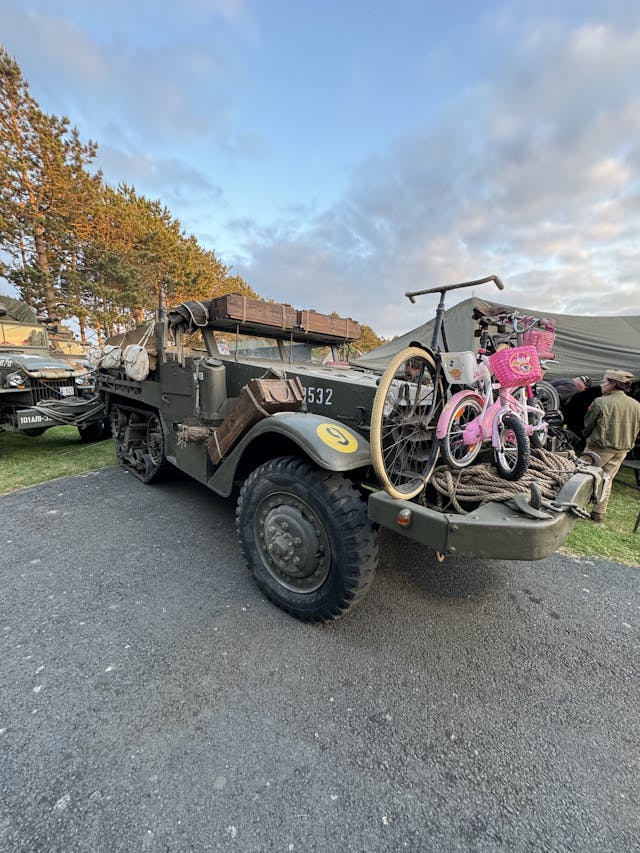
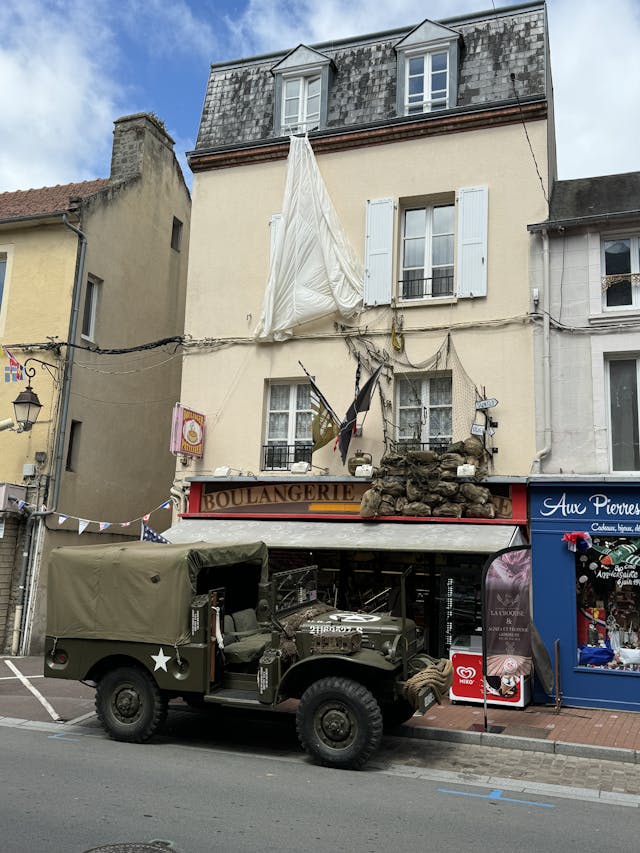
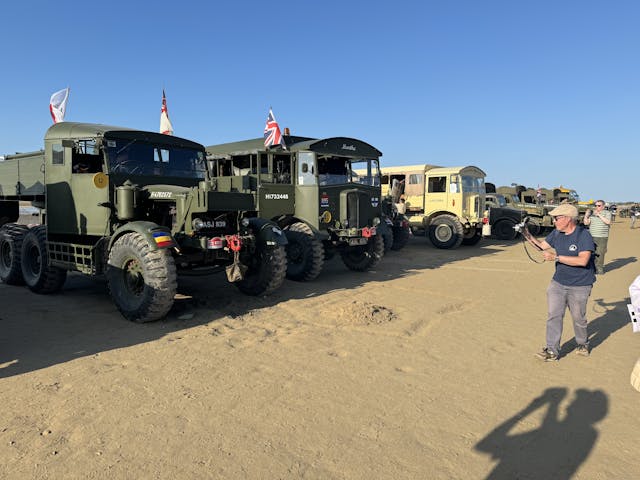





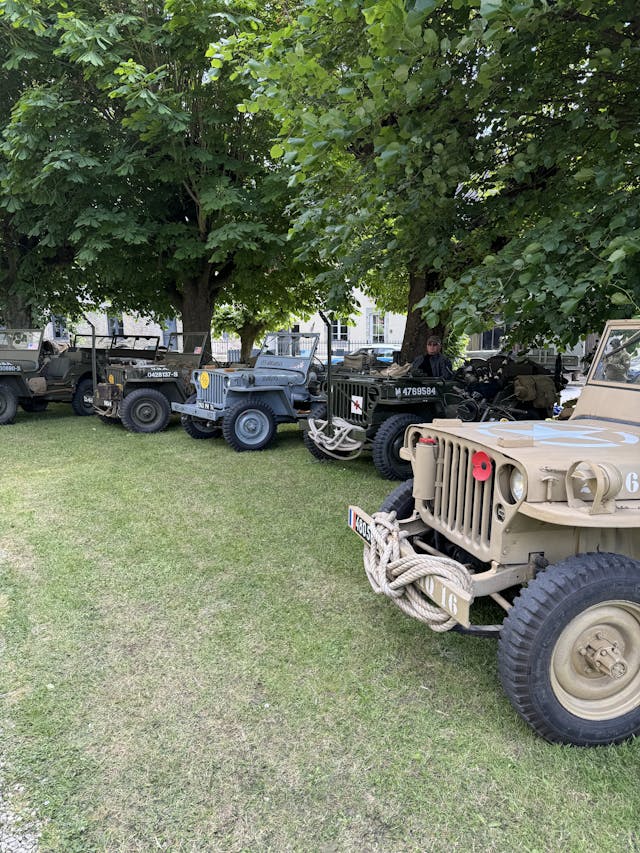
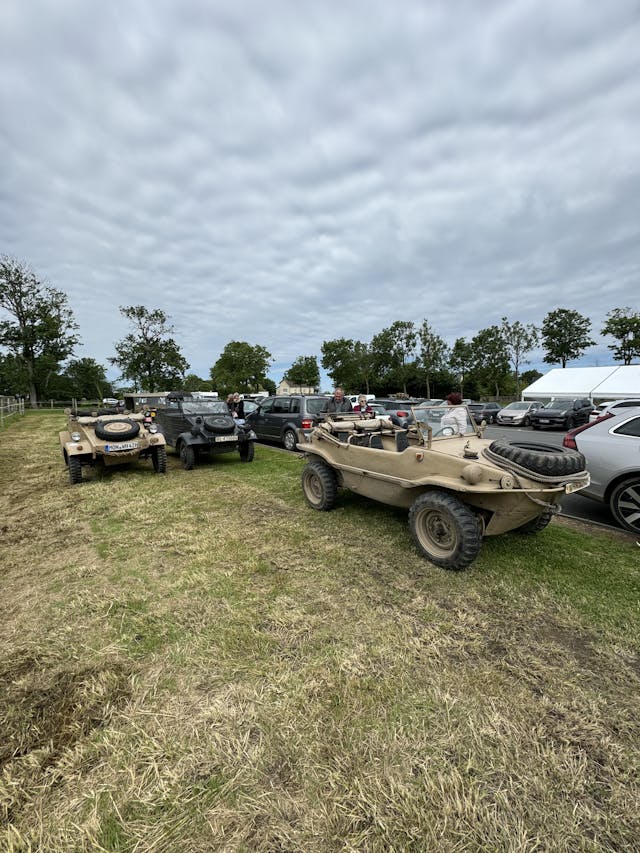
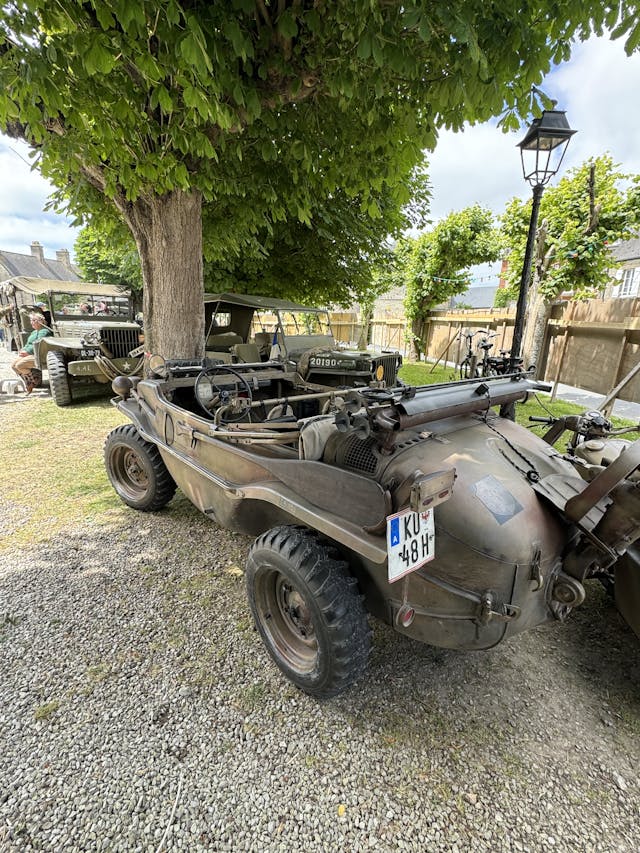














My dad drove onto Omaha beach on d day in a GMC 6×6 loaded with radio equipment. He said that he had to waterproof the engine to run in the water and for the rest of his life had a love for Jeeps.
I love the pics. Looks like a fun/great trip to remember the sacrifice many made for our freedom.
Different cultures, different perspectives. Think of an Irish funeral, which in my family ends in a usually rowdy, sometimes drunken, celebration of the life of the deceased, commonly held in the deceased’s “local” (pub). Keep in mind, also, that citizens of France and the rest of mainland Europe have much to celebrate in the wake of D-Day. As long as the landing zones and cemeteries maintain a respectful atmosphere, I think a celebratory tone is acceptable, even expected.
They’ve just happy to be free. The rest of the world should be so lucky.
I had a 1953 Dodge M37 ambulance – similar but slightly newer. Actually easy to drive if you weren’t in a hurry
I was in Stalag Luft 1 POW camp for 20 months, prior to its abandonment as Russian troops invaded Germany in 1943. As a freed “Kriege”, I left the camp to greet the oncoming Russkies. The first advancing Rusians I met
were driving two Dodge trucks pulling small red “water” wagons. Not speaking Russian, I pointed at the water wagon and indicated my thirst. They drew a canteen of water of a trailer, of whihich I took a healthy swallow…
only to blow it out in a blast:It was heavily laced with vodka! This was what gave the Russians their bravado!
They scared Germans stiff!
My Canadian Forces E & K Scots Highland light infantry had a 3/4 ton SMP with the flat 6, 4speed 4×4 kin in our unit. As driver/mech. rating I got the job of driving it when needed. As per Canadian Armed forces regs ( over -40F no heater) and per regiment dress code no underwear when in dress #1 uniform of kilts. With no floor grommets on the clutch, brake and fuel pedals, shifter, 4×4 and auxillary drive levers. It made winter time driving a real indurance exercise as the cold air blew right up between the legs.